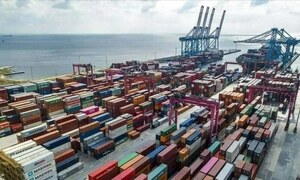Brunei, Singapore, Hong Kong, China rank among the top five economies in developing Asia and the Pacific in terms of real per capita income, says a new study undertaken on purchasing power parities in the region.
According to the 2005 International Comparison Programme (ICP) in Asia and the Pacific: Purchasing Power Parity and Real Expenditure released on Monday, there is a huge disparity in real per capita Gross Domestic Product (GDP) in the region.
India, one of the fastest growing economies in the region, has a per capita income lower than the regional average, behind its neighbours Sri Lanka and Pakistan. The PRC, the region's growth engine, has above-average real per capita income.
The study, which provides a snapshot of economic measures like income, consumption expenditure and capital formation, is part of a global initiative that allows cross-country comparison purchasing powers of currencies and living standards. The ICP, which was co-ordinated globally by the World Bank, will allow comparison of major economic indicators for 146 countries globally.
The Asian Development Bank (ADB) was the regional co-ordinator for the ICP Asia-Pacific, which accounts for half the world's population. Statistical organisations of the region actively participated in this initiative.
Purchasing Power Parity (PPP) is an idea popularised by The Economist's Big Mac Index, which prices hamburgers in global cities for a quick and crude comparison of inter-country price levels. The ICP is an attempt at a cross-country comparison of key economic indicators based on PPP and provides the most comprehensive cover of a broader range of commodities.
For the first time, the People's Republic of China (PRC) and India, which together make up 64 percent of the total real GDP of the 23 economies participating in ICP Asia-Pacific which simultaneously joined this regional initiative to estimate the purchasing power parities of currencies. However, data collection and price estimation, especially when nation wide price data are not available, of various components of an economy's consumption basket pose challenges for measurement of PPP.
"The data and the results should be interpreted carefully. It is the beginning of a global and regional effort, which, in turn, will improve the robustness of future PPP estimates," says Afzal Ali, Chief Economist of ADB.
The richest economy, Brunei, has a per capita GDP more than 13 times the regional average and more than 40 times larger than the lowest ranked economy, Nepal, says the study. According to ICP, however, both the PRC and India still lag the regional average when ranked in terms of Actual Final Consumption Expenditure (AFCE).
BR100
11,819
Decreased By
-47.3 (-0.4%)
BR30
35,728
Increased By
30.6 (0.09%)
KSE100
113,635
Decreased By
-513 (-0.45%)
KSE30
35,761
Decreased By
-191.4 (-0.53%)
























Comments
Comments are closed.